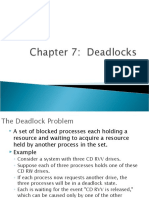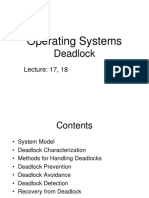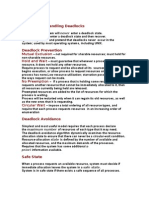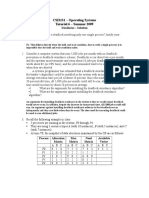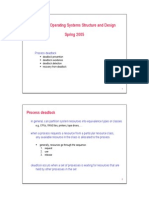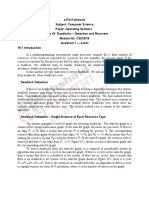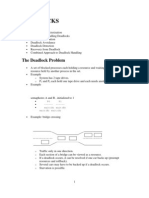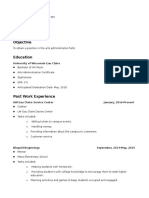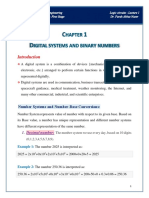0% found this document useful (0 votes)
12 views9 pagesMethods of Handling Deadlocks
The document discusses methods for handling deadlocks in operating systems, including prevention, avoidance, and detection. It outlines strategies such as deadlock prevention techniques, the Banker’s Algorithm for resource allocation, and recovery methods from deadlocks. Additionally, it explains the conditions under which deadlocks can occur and the algorithms used to detect and resolve them.
Uploaded by
prabhasputtu017Copyright
© © All Rights Reserved
We take content rights seriously. If you suspect this is your content, claim it here.
Available Formats
Download as PDF, TXT or read online on Scribd
0% found this document useful (0 votes)
12 views9 pagesMethods of Handling Deadlocks
The document discusses methods for handling deadlocks in operating systems, including prevention, avoidance, and detection. It outlines strategies such as deadlock prevention techniques, the Banker’s Algorithm for resource allocation, and recovery methods from deadlocks. Additionally, it explains the conditions under which deadlocks can occur and the algorithms used to detect and resolve them.
Uploaded by
prabhasputtu017Copyright
© © All Rights Reserved
We take content rights seriously. If you suspect this is your content, claim it here.
Available Formats
Download as PDF, TXT or read online on Scribd
/ 9


